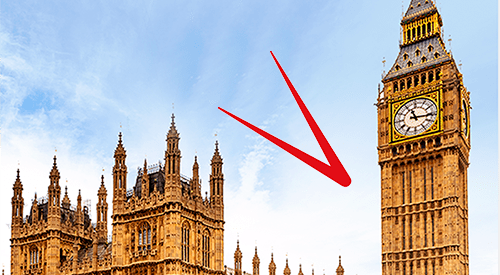
Prime ministerial pay has been in the news quite a lot in recent weeks for a range of reasons, leading our chart of the week to look at how the prime minister’s salary has evolved over the last 15 years.
As the chart illustrates, former PM Gordon Brown was entitled to a salary of £197,689 and had an actual salary of £193,885 on 1 April 2009, significantly higher than today’s current official salary of £172,153 or the actual salary of £166,786 taken by current PM Keir Starmer. This is despite cumulative inflation of 55% (3.0% a year on average) or an increase in MP base pay of 41% (2.3% a year) over the past 15 years.
The reasons for these reductions in prime ministerial salary are primarily the result of a voluntary pay cut to £150,000 taken by Gordon Brown in the run up to the May 2010 election, and a further cut of 5% to £142,500 adopted by incoming PM David Cameron.
Cameron maintained his pay at this level for the duration of his first term in office, converting his voluntary decision into a permanent change in 2012 (backdated to 2011) in how much he and his successors have been entitled to receive. The chart shows how Cameron accepted a pay rise following the 2015 general election, taking him from a salary of £142,500 on 1 April 2012 out of an official entitlement of £142,545 to £150,402 on 1 April 2016 out of £152,532.
Subsequent prime ministers have also exercised pay restraint by restricting increases in ministerial pay, or in not taking all of the increases to which they were entitled. As a consequence, Theresa May concluded her period as prime minister in 2019 on a salary of £154,908 out of an official salary of £158,754, while Boris Johnson and Liz Truss were on annual salaries of £159,584 in 2022, short of their full entitlement of £164,951.
Rishi Sunak concluded his period as prime minister on an official salary of £172,153 from 1 April 2024 onwards, being the amount to which Sir Keir Starmer is entitled to claim if he wanted. However, the politics of accepting pay rises is difficult – perhaps now more than ever – and so Keir Starmer has stuck with the £166,786 actual salary that his predecessor was on before the 2024 general election.
Our chart illustrates how the prime minister’s official salary has eroded in value over the last 15 years by calculating how it would have risen to £219,800 on 1 April 2012, £232,000 on 1 April 2016, £247,720 on 1 April 2019, £266,020 on 1 April 2022 and £305,770 this year if it had increased in line consumer price inflation instead.
There are arguments for using other indexes for this comparison, such as public sector pay, which if used would have led to an official salary of £299,060 on 1 April 2024 ; average GDP per capita, perhaps a better measure of national economic performance, would have resulted in an official salary of £301,530. Linking to overall average pay would have led to an official salary of £311,990 today, while maintaining its value in comparison with pay in the private sector would have delivered a potential pay packet for the PM of £334,360.
The requirement for successive prime ministers to approve their own pay has led to the opposite of what you might think would happen. Instead of raising their salary ever higher because they have the power to do so, political choices and pressures have led them instead to cut or freeze their pay at different points over the last 15 years, resulting in a significant erosion in prime ministerial pay in that time.
These choices have led to the UK paying its head of government substantially less than comparable leaders such as Australian PM Anthony Albanese’s annual salary of A$607,500 (£311,500), German Chancellor Olaf Scholz’s €348,300 (£290,250) or Canadian PM Justin Trudeau’s C$408,200 (£226,800).
Ironically, it might be the prime minister (and his successors) who could benefit most of all of our public servants by taking the power to set his own pay away and giving it to an independent pay review body instead.




